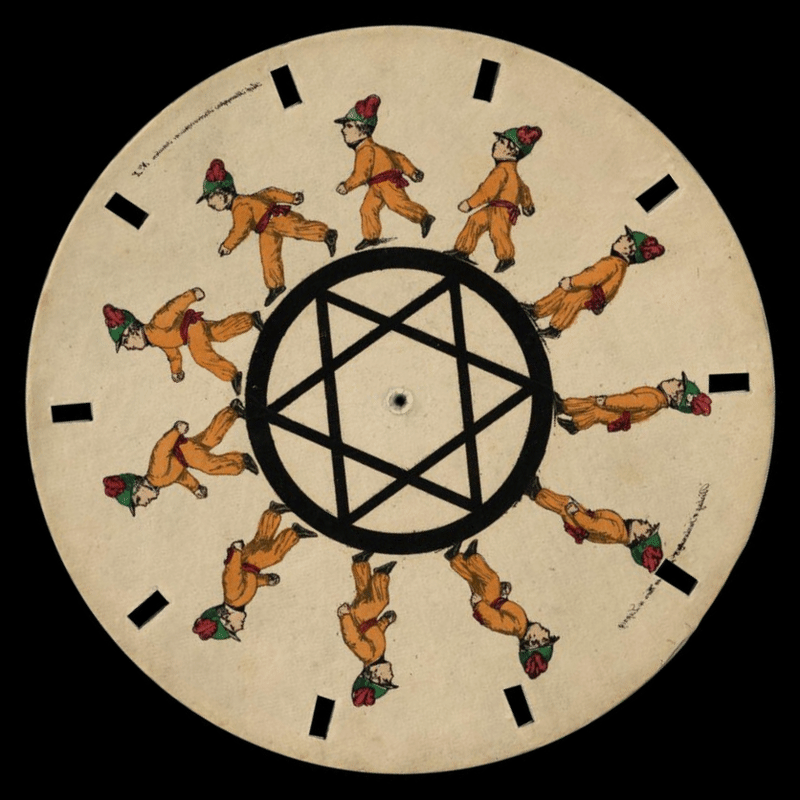|
Bully Dance
''Bully Dance'' (French: ''La danse des brutes'') is a 2000 animated short film by Janet Perlman about bullying. In this 10 minutes short film without words, a community is disrupted when a bully victimizes a smaller member of the group. The whole community becomes involved in dealing with the bully, who is himself a victim at home. In the film, characters move in rhythm to an all-percussive soundtrack for the film, which was inspired by the filmmaker's own experiences in dance classes. Character animation and backgrounds were drawn on paper in ink, then scanned into a computer. It was the first time Perlman had used computers to create an animated film. The film received thirteen awards, including the Award for Best Animated Short Film from the Children's Jury and the Grand Prix de Montréal - Best Short Film at the Festival International du film pour enfants and First Prize in short film & video animation in recognition of outstanding achievement in children's media from the Ch ... [...More Info...] [...Related Items...] OR: [Wikipedia] [Google] [Baidu] |
Janet Perlman
Janet Laurie Perlman (born September 19, 1954) is a Canadian animator and children's book author and illustrator whose work includes the short film ''The Tender Tale of Cinderella Penguin'', which was nominated for an Academy Award for Best Animated Short Film at the 54th Academy Awards and received a Parents' Choice Award. Her 13 short films have received 60 awards to date. She was married to the late animation producer Derek Lamb. After working with Lamb at the National Film Board of Canada in the 1980s, they formed their own production company, Lamb-Perlman Productions. She is currently a partner in Hulascope Studio, based in Montreal. Perlman has produced animation segments for ''Sesame Street'' and ''NOVA''. Working with Lamb, she produced title sequences for the PBS series ''Mystery!'', based on the artwork of Edward Gorey, and was one of the animators for R. O. Blechman's adaptation of ''The Soldier's Tale'' for PBS's ''Great Performances''. She has also taught animation at H ... [...More Info...] [...Related Items...] OR: [Wikipedia] [Google] [Baidu] |
Animated Films Without Speech
Animation is a method by which still figures are manipulated to appear as moving images. In traditional animation, images are drawn or painted by hand on transparent celluloid sheets to be photographed and exhibited on film. Today, most animations are made with computer-generated imagery (CGI). Computer animation can be very detailed 3D animation, while 2D computer animation (which may have the look of traditional animation) can be used for stylistic reasons, low bandwidth, or faster real-time renderings. Other common animation methods apply a stop motion technique to two- and three-dimensional objects like paper cutouts, puppets, or clay figures. A cartoon is an animated film, usually a short film, featuring an exaggerated visual style. The style takes inspiration from comic strips, often featuring anthropomorphic animals, superheroes, or the adventures of human protagonists. Especially with animals that form a natural predator/prey relationship (e.g. cats and mi ... [...More Info...] [...Related Items...] OR: [Wikipedia] [Google] [Baidu] |
2000s Educational Films
S, or s, is the nineteenth letter in the Latin alphabet, used in the modern English alphabet, the alphabets of other western European languages and others worldwide. Its name in English is ''ess'' (pronounced ), plural ''esses''. History Origin Northwest Semitic šîn represented a voiceless postalveolar fricative (as in 'ip'). It originated most likely as a pictogram of a tooth () and represented the phoneme via the acrophonic principle. Ancient Greek did not have a phoneme, so the derived Greek letter sigma () came to represent the voiceless alveolar sibilant . While the letter shape Σ continues Phoenician ''šîn'', its name ''sigma'' is taken from the letter ''samekh'', while the shape and position of ''samekh'' but name of ''šîn'' is continued in the '' xi''. Within Greek, the name of ''sigma'' was influenced by its association with the Greek word (earlier ) "to hiss". The original name of the letter "sigma" may have been ''san'', but due to the complic ... [...More Info...] [...Related Items...] OR: [Wikipedia] [Google] [Baidu] |
Canadian Children's Animated Films
Canadians (french: Canadiens) are people identified with the country of Canada. This connection may be residential, legal, historical or cultural. For most Canadians, many (or all) of these connections exist and are collectively the source of their being ''Canadian''. Canada is a multilingual and multicultural society home to people of groups of many different ethnic, religious, and national origins, with the majority of the population made up of Old World immigrants and their descendants. Following the initial period of French and then the much larger British colonization, different waves (or peaks) of immigration and settlement of non-indigenous peoples took place over the course of nearly two centuries and continue today. Elements of Indigenous, French, British, and more recent immigrant customs, languages, and religions have combined to form the culture of Canada, and thus a Canadian identity. Canada has also been strongly influenced by its linguistic, geographic, and eco ... [...More Info...] [...Related Items...] OR: [Wikipedia] [Google] [Baidu] |
Computer-animated Short Films
Computer animation is the process used for digitally generating animations. The more general term computer-generated imagery (CGI) encompasses both static scenes ( still images) and dynamic images ( moving images), while computer animation refers to moving images. Modern computer animation usually uses 3D computer graphics to generate a three-dimensional picture. The target of the animation is sometimes the computer itself, while other times it is film. Computer animation is essentially a digital successor to stop motion techniques, but using 3D models, and traditional animation techniques using frame-by-frame animation of 2D illustrations. Computer-generated animations can also allow a single graphic artist to produce such content without the use of actors, expensive set pieces, or props. To create the illusion of movement, an image is displayed on the computer monitor and repeatedly replaced by a new image that is similar to it but advanced slightly in time (usually at a ... [...More Info...] [...Related Items...] OR: [Wikipedia] [Google] [Baidu] |
Films Directed By Janet Perlman
A film also called a movie, motion picture, moving picture, picture, photoplay or (slang) flick is a work of visual art that simulates experiences and otherwise communicates ideas, stories, perceptions, feelings, beauty, or atmosphere through the use of moving images. These images are generally accompanied by sound and, more rarely, other sensory stimulations. The word "cinema", short for cinematography, is often used to refer to filmmaking and the film industry, and to the art form that is the result of it. Recording and transmission of film The moving images of a film are created by photographing actual scenes with a motion-picture camera, by photographing drawings or miniature models using traditional animation techniques, by means of CGI and computer animation, or by a combination of some or all of these techniques, and other visual effects. Before the introduction of digital production, series of still images were recorded on a strip of chemically sensitize ... [...More Info...] [...Related Items...] OR: [Wikipedia] [Google] [Baidu] |
Social Guidance Films
Social guidance films constitute a genre of educational films attempting to guide children and adults to behave in certain ways. Originally produced by the U.S. government as "attitude-building films" during World War II, the genre grew to be a common source of instruction in elementary and high school classrooms in the United States from the late 1940s to the early 1970s. The films covered topics including courtesy, grammar, social etiquette and dating, personal hygiene and grooming, health and fitness, civic and moral responsibility, sexuality, child safety, national loyalty, racial and social prejudice, juvenile delinquency, drug use, and driver safety; the genre also includes films for adults, covering topics such as marriage, business etiquette, general safety, home economics, career counseling and how to balance budgets. A subset is known as hygiene films addressing mental hygiene and sexual hygiene.http://www.writing.upenn.edu/~afilreis/50s/hygiene-films.html History Socia ... [...More Info...] [...Related Items...] OR: [Wikipedia] [Google] [Baidu] |
Films About Bullying
A film also called a movie, motion picture, moving picture, picture, photoplay or (slang) flick is a work of visual art that simulates experiences and otherwise communicates ideas, stories, perceptions, feelings, beauty, or atmosphere through the use of moving images. These images are generally accompanied by sound and, more rarely, other sensory stimulations. The word "cinema", short for cinematography, is often used to refer to filmmaking and the film industry, and to the art form that is the result of it. Recording and transmission of film The moving images of a film are created by photographing actual scenes with a motion-picture camera, by photographing drawings or miniature models using traditional animation techniques, by means of CGI and computer animation, or by a combination of some or all of these techniques, and other visual effects. Before the introduction of digital production, series of still images were recorded on a strip of chemically sensitiz ... [...More Info...] [...Related Items...] OR: [Wikipedia] [Google] [Baidu] |
Quebec Films
The history of cinema in Quebec started on June 27, 1896 when the Frenchman Louis Minier inaugurated the first movie projection in North America in a Montreal theatre room. However, it would have to wait until the 1960s before a genuine Quebec cinema industry would emerge. Approximately 620 feature-length films have been produced, or partially produced by the Quebec film industry since 1943. Due to language and cultural differences between the predominantly francophone population of Quebec and the predominantly English Canadian, anglophone population of the rest of Canada, Quebec's film industry is commonly regarded as a distinct entity from its English Canadian counterpart. In addition to participating in Canada's national Genie Awards, the Quebec film industry also maintains its own awards ceremony, the Prix Iris (formerly known as Jutra). In addition, the popularity of homegrown French language films among Quebec audiences, as opposed to English Canadians' preference for Hol ... [...More Info...] [...Related Items...] OR: [Wikipedia] [Google] [Baidu] |
National Film Board Of Canada Animated Short Films
National may refer to: Common uses * Nation or country ** Nationality – a ''national'' is a person who is subject to a nation, regardless of whether the person has full rights as a citizen Places in the United States * National, Maryland, census-designated place * National, Nevada, ghost town * National, Utah, ghost town * National, West Virginia, unincorporated community Commerce * National (brand), a brand name of electronic goods from Panasonic * National Benzole (or simply known as National), former petrol station chain in the UK, merged with BP * National Car Rental, an American rental car company * National Energy Systems, a former name of Eco Marine Power * National Entertainment Commission, a former name of the Media Rating Council * National Motor Vehicle Company, Indianapolis, Indiana, USA 1900-1924 * National Supermarkets, a defunct American grocery store chain * National String Instrument Corporation, a guitar company formed to manufacture the first resonator gui ... [...More Info...] [...Related Items...] OR: [Wikipedia] [Google] [Baidu] |
2000 Films
The year 2000 in film involved some significant events. The top grosser worldwide was '' Mission: Impossible 2''. Domestically in North America, '' Gladiator'' won the Academy Awards for Best Picture and Best Actor ( Russell Crowe). ''Dinosaur'' was the most expensive film of 2000 and a box-office success. __TOC__ Overview 2000 saw the releases of the first installment of popular film series '' X-Men'', '' Final Destination'', '' Scary Movie'', and ''Meet the Parents''. Among the films based on TV shows are '' Mission: Impossible 2'', '' Traffic'', '' The Adventures of Rocky and Bullwinkle'', '' Charlie's Angels'' and '' Rugrats in Paris: The Movie'' Among the movies based on books (and TV shows) is '' Thomas and the Magic Railroad''. The most acclaimed films of the year are '' Gladiator''; '' Traffic''; '' Crouching Tiger, Hidden Dragon''; '' American Psycho''; '' Almost Famous, Requiem for a Dream,'' and '' Erin Brockovich''. Highest-grossing films The top 10 films rele ... [...More Info...] [...Related Items...] OR: [Wikipedia] [Google] [Baidu] |

